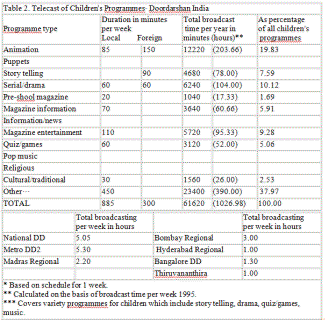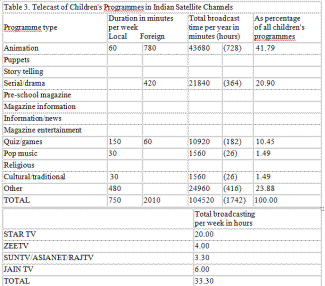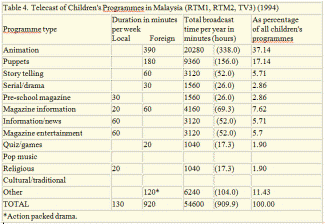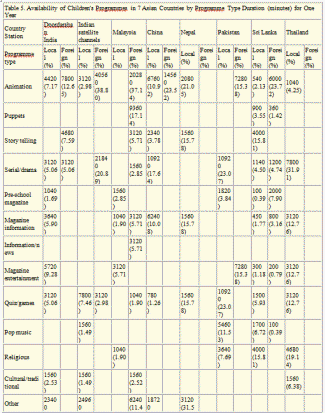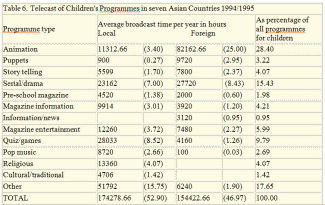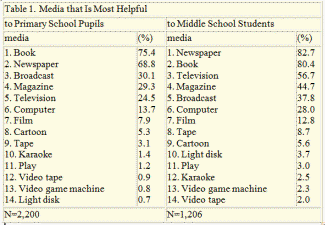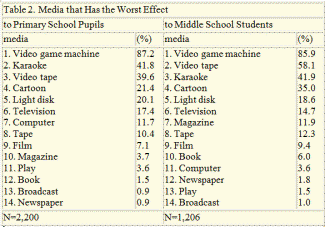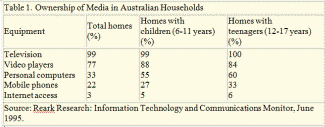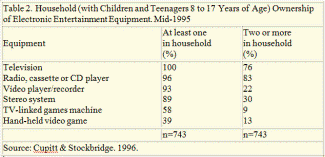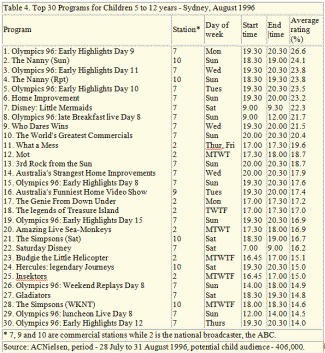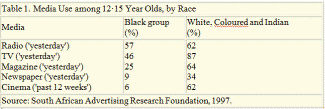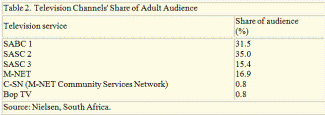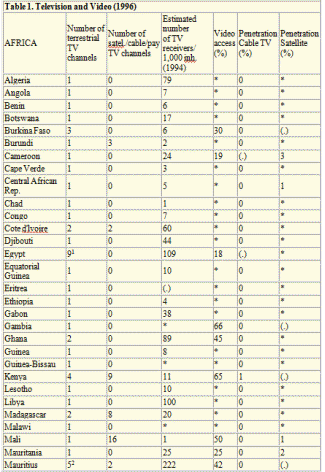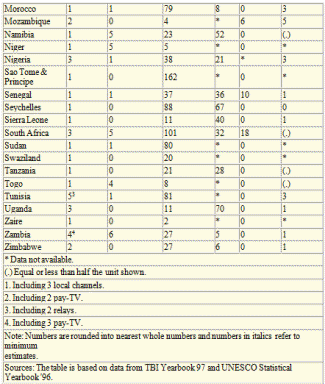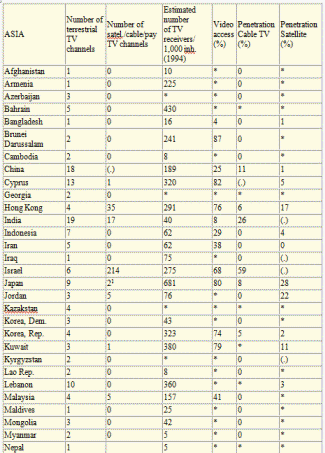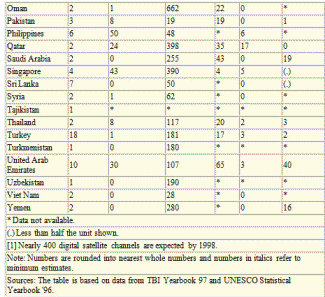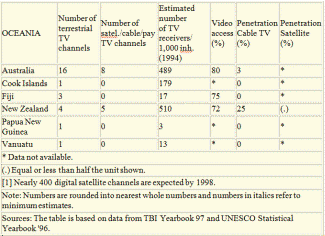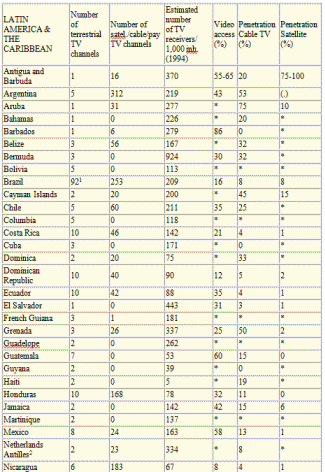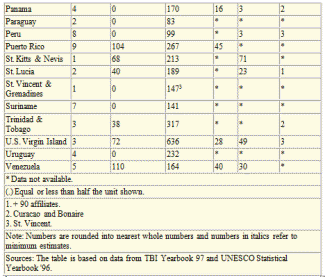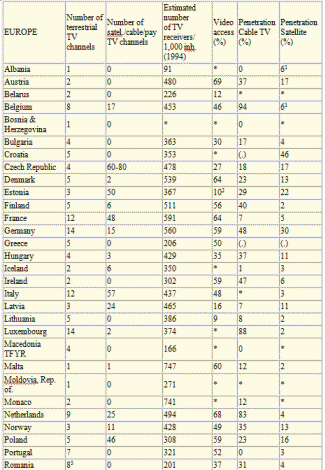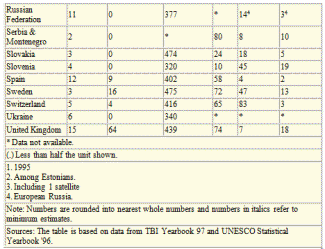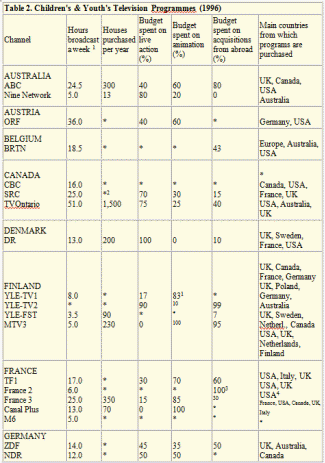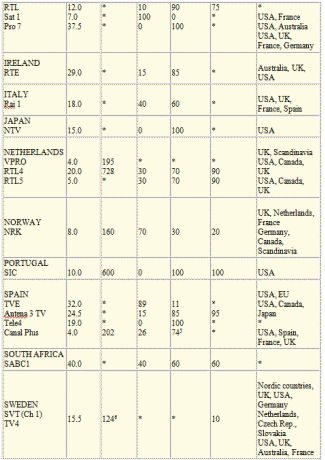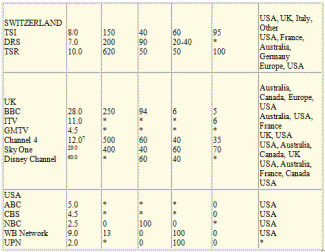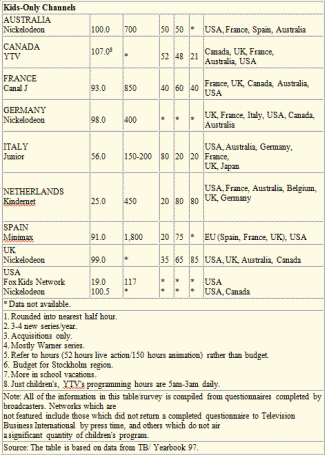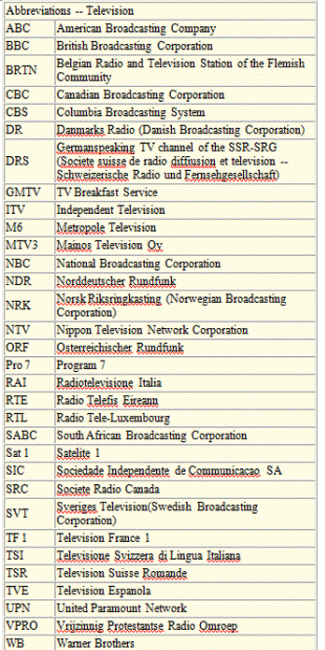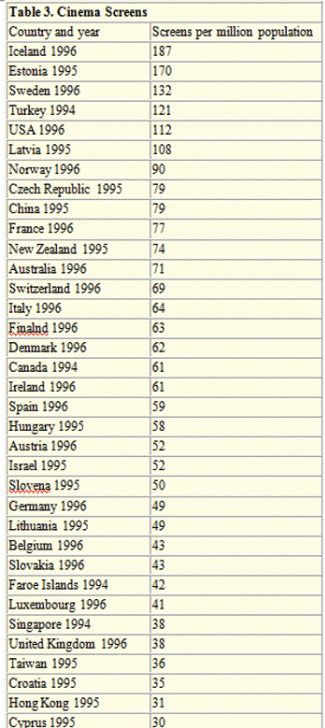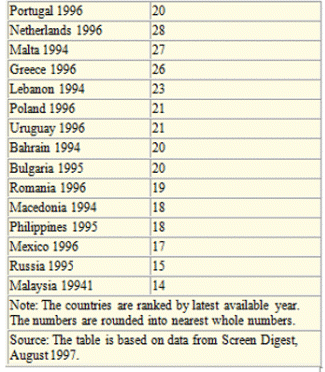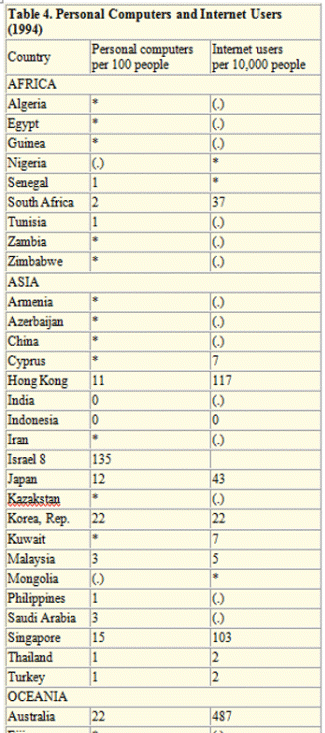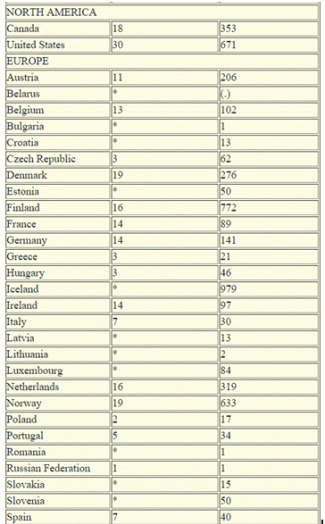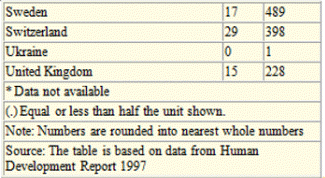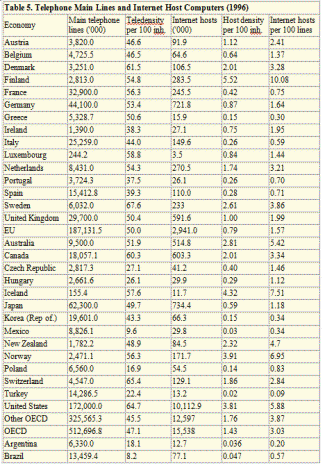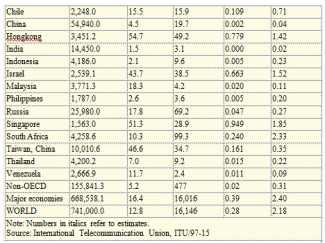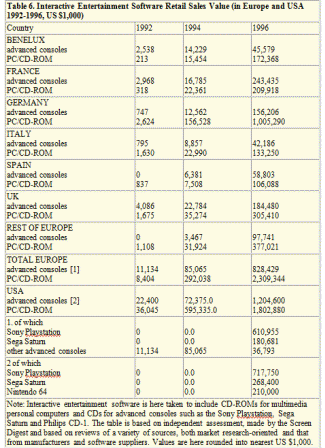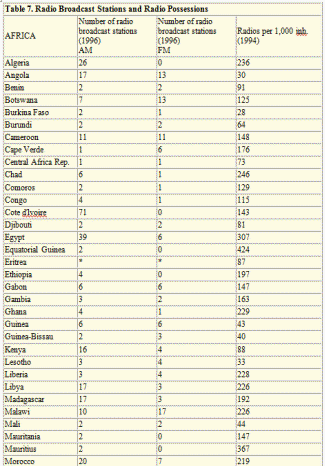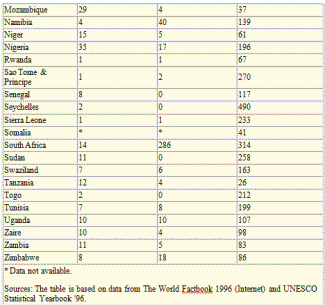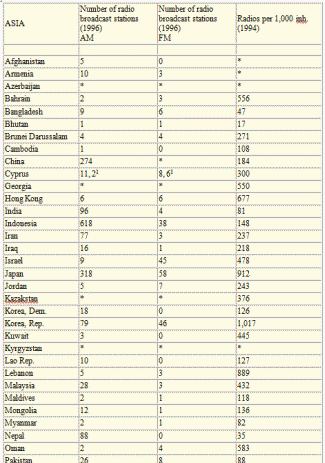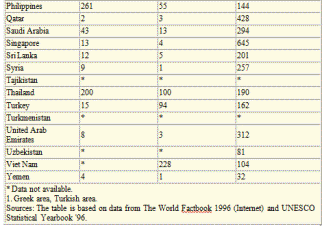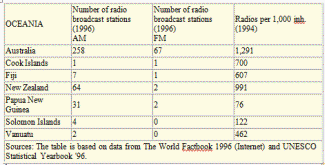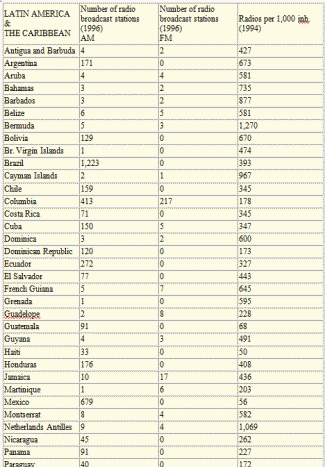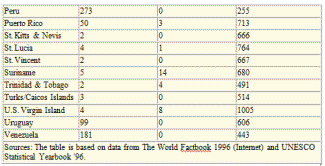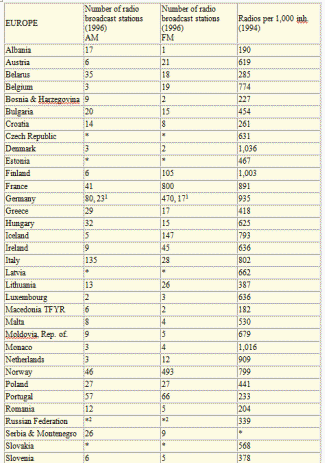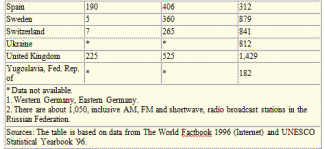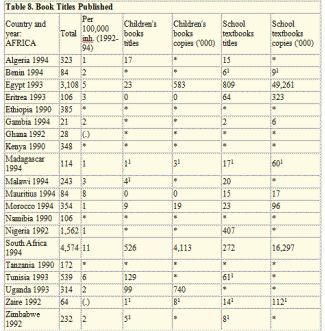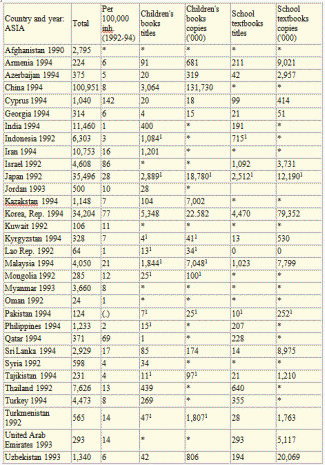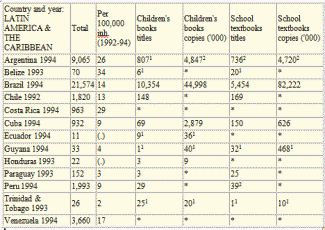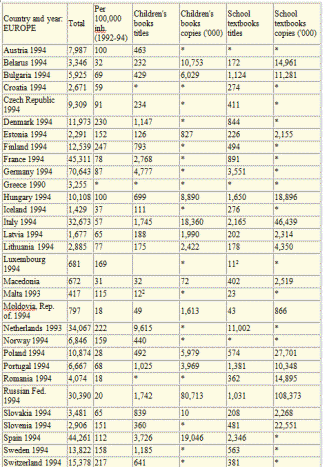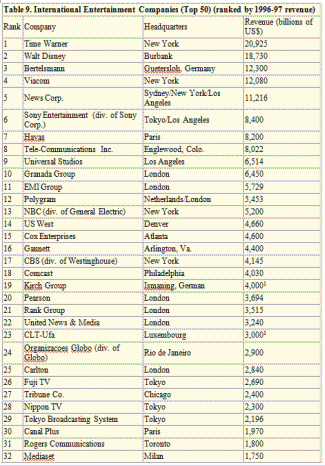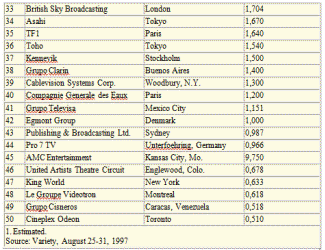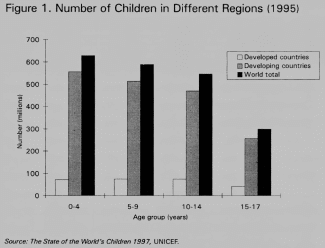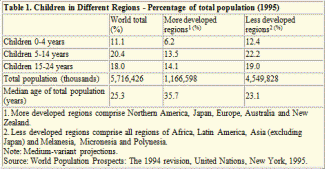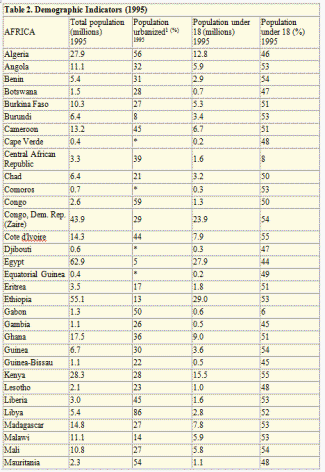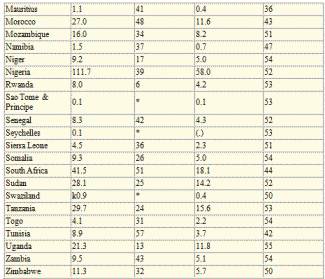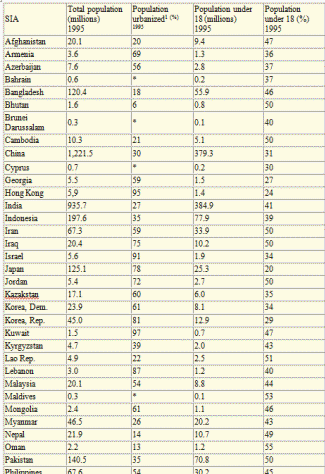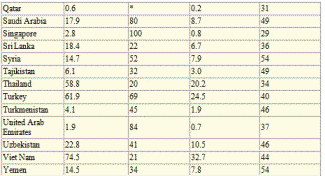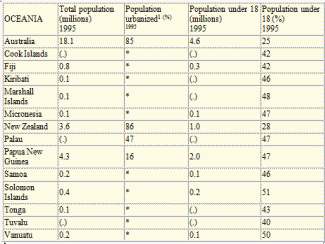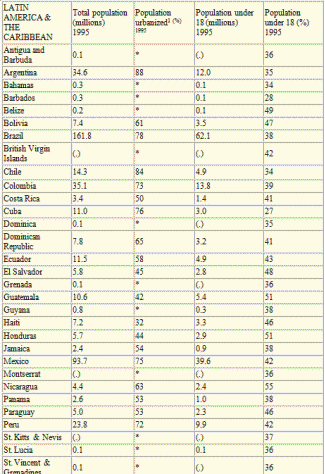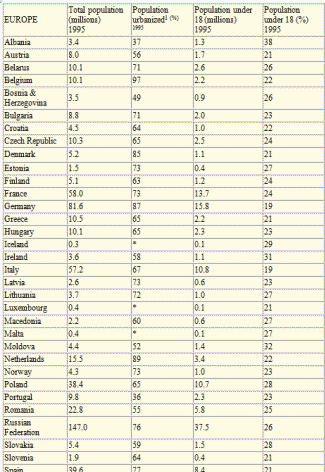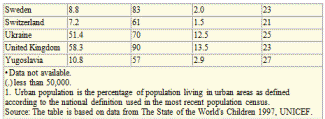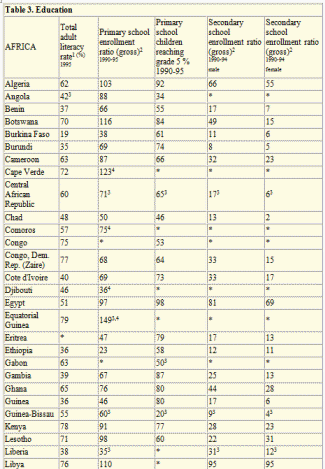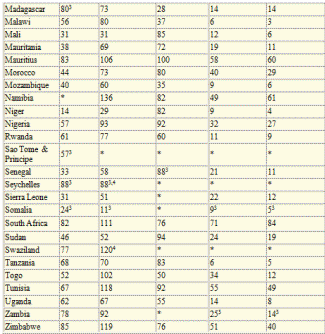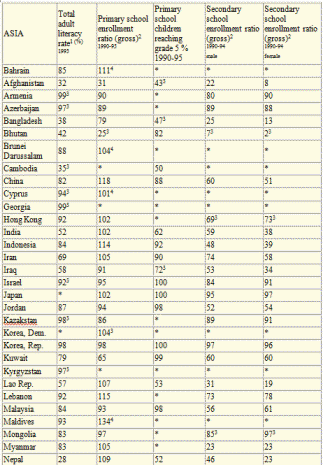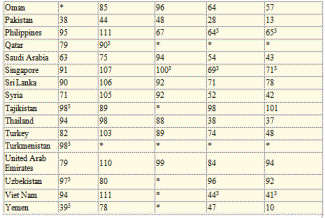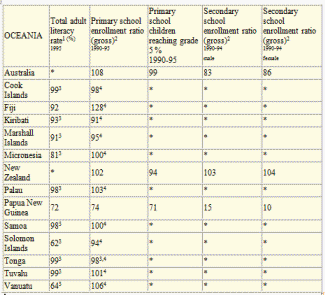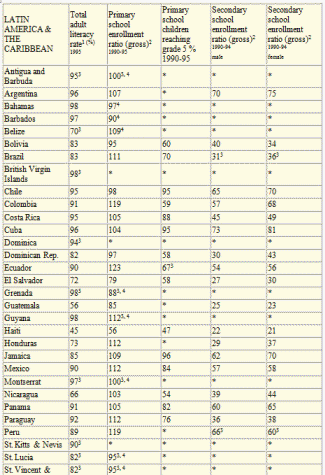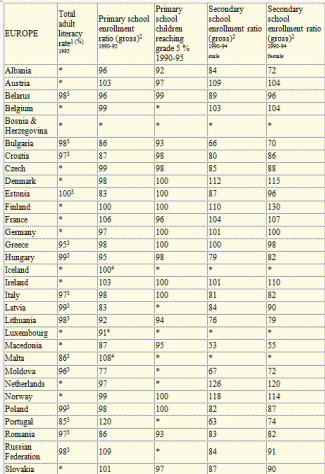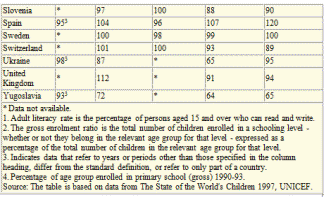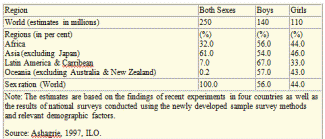JO GROEBEL
Summary
This report presents the results of the UNESCO global study on media violence which was conducted between 1996 and 1997 as a joint research project by the World Organization of the Scout Movement and Utrecht University under the scientific supervision of Prof. Dr. Jo Groebel. It is the largest ever intercultural study on the role of media violence for children with a total of more than 5,000 pupils from 23 different countries all over the world participating.
The study is also unique in several other respects. For the first time, International crisis regions (war zones and high crime areas alike) were part of the research sample. Several of the countries which covered the whole global range of social and technological development had never before participated in an empirical social science study on media.
The methodology used was also unique in so far as all participating 12-year old children answered exactly the same standardized 60-items questionnaire which was translated into the different languages like, for example, Japanese, English, Russian, French, Arabian, etc. The content of the questions was not culture-bound, as otherwise a direct comparison of the data would have been impossible. The children reported their media behaviour, their habits, preferences, and social environment. By January 1998, app. 350,000 individual data had been collected and processed in the context of the study.
The following countries participated in the core study: Angola, Argentina, Armenia, Brazil, Canada, Costa Rica, Croatia, Egypt, Fiji, Germany, India, Japan, Mauritius, the Netherlands, Peru, Philippines, Qatar, South Africa, Spain, Tadjikistan, Togo, Trinidad & Tobago, Ukraine. These countries represent the broad spectrum of human and technological development, and major world cultures, and thus reflect a representative range of countries as covered in the 1997 UNDP Human Development Report. In a next stage, additional countries will be part of an extension of the research program with countries like the United States, Russia, Finland, Poland, etc.
In each country, the data were collected in metropolitan and rural areas, in high-and low-aggression environments, from boys and girls, and from different types of schools. The only groups of children who could not be considered in the study were those who were not attending any school or living in extremely remote areas. However, even children who lived in refugee camps have been participating. The logistics and distribution of the questionnaires among average children were organized by members of the Scout Movement; the scientific supervision and analysis was conducted at Utrecht University.
Five major issues were addressed:
• Which role do the media, and in particular TV, play in the lives of children on a global level?
• Why are children fascinated by media violence?
• What is the relationship between media violence and aggressive behaviour among children?
• Are there cultural as well as gender differences in the media impact on aggression?
• How do violent environments (war/crime) on the one hand and the state of technological development on the other influence the coping with aggressive media content?
The results demonstrate:
93% of the children in this study have access to a TV-set. The range is 99% for the North-Western hemisphere to 83% for Africa with Asia and Latin-America in between. In the areas surveyed, the screen has practically become a universal medium. For schoolchildren, it is the most powerful source of information and entertainment. Even radio and books do not have the same global distribution.
The world's children spend an average of 3 hours daily in front of the screen with of course a broad International spectrum of individual viewing behaviour. That is at least 50% more time spent with this medium than with any other out-of-school activity including home-work, being with family or friends, or reading.
Thus, TV has become a major socialization factor and dominates the life of children in urban and electrified rural areas around the globe.
In particular boys are fascinated by aggressive media heroes. Some of these, like Arnold Schwarzenegger's Terminator, have become global icons; 88% of the world's children know him. 51% of the children from high-aggression environments (war; crime) would like to be like him as compared to 37% in the low-aggression neighbourhoods. Clearly, children need and use media heroes as role models to cope with difficult situations. And these are plentiful for the children of the world.
A remarkable large number live in a problematic emotional state. Nearly half of the children report that they are anxious most of the time or often; 9% had to flee their homesite at least once in their life; 47% report that they would like to live in another country. In the high-aggression areas, 16% of the children report that most people in their neighbourhood die because they are killed by others. Here, 7.5% of the children have already themselves used a weapon against someone.
In this situation, media heroes are used for escapism and compensation of the children's actual problems. For boys, it is primarily aggressive role models (30% name an action hero), for girls, pop stars and musicians. There are regional differences for the favourite heroes: Asia has the highest ranking for action heroes (34%), Africa the lowest (18%), with Europe and the Americas in between (25% each).
The children's world views are obviously influenced by actual as well as media experiences. Nearly one third of the aggression-environment group believe that most people in the world are evil as compared to a fifth in the low aggression group. A remarkable number of children from both groups report a strong overlap in what they perceive as reality and what they see on the screen (about 44%). Many children are surrounded by an environment where "real" and media experiences both support the view that violence is natural.
The impact of media violence can primarily be explained through the fact that aggressive behaviour is rewarded. 47% of those children who prefer aggressive media content would also like to be involved in a risky situation (as compared to 19% with another media preference). This holds again in particular for boys. In addition, nations with a high level of technological development reinforce the risk-seeking tendency. The broad spectrum of different available audio-visual communication means have increased the desire to permanently satisfy physiological stimulus needs which are triggered through aggressive media content.
All in all, one can conclude:
• Media violence is universal. It is primarily presented in a rewarding context.
• Depending on the personality characteristics of the children, and depending on their everyday-life experiences, media violence satisfies different needs: It "compensates" one's own frustrations and deficits in problem areas. It offers "thrills" for children in less problematic environments. For boys it creates a frame of reference for "attractive role models".
• There are many cultural differences, and yet, the basic patterns of the media violence implications are similar around the world.
• Individual movies are not the problem. However, the extent and omnipresence of media violence (with an average of 5 to 10 aggressive acts per TV-program hour in many countries) contribute to the development of a global aggressive culture.
• The "normality" and the "reward characteristics" of aggression are more systematically promoted than non-aggressive ways of coping with one's life. Therefore, the risk of media violence prevails on a global level.
What can be done in this situation?
Violence has always been an element of fiction and news reporting. It can not be excluded from any media coverage. However, its extent, extremeness, and reward characteristics are the problem. Therefore, three major strategies should be considered on an International level:
• Public debate and "common ground" talks between the five Ps: Politicians, Producers, Pedagogy, Parents, and the future Prosumers (active consumers).
• The development of codes of conduct and self-control among media professionals.
• The establishment of media education to create competent and critical media users.
With communication systems like the Internet, the media will be even more omnipresent, universal, and global. The media bear "risks", as this study has demonstrated. But they also offer many new prosocial possibilities. As a consequence, the new digital environment demands similar attention as culture and education in the traditional world.
The problem
Children and adolescents have always been interested in arousing and often even violent stories and fairy-tales. With the occurrence of mass media, film and in particular television, however, the quantity of aggressive content daily consumed by these age groups has dramatically increased. As real violence, especially among the youth, at the same time is still growing, it seems plausible to correlate the two, media violence and aggressive behaviour. With more recent media developments, video recorders, computer games and the Internet one can see a further increase of extremely violent images which obviously find much attention. Videos present realistic torture scenes and even real murder, computer games enable the user to actively simulate the mutilation of "enemies", and the Internet has -- apart from its prosocial possibilities -- become a platform for child pornography, violent cults, and terrorist guidelines. Even with these phenomena, however, it is crucial to realize, that still the primary causes for aggressive behaviour will most probably be found in the family environment, the peer groups, and in particular the social and economic conditions children are raised in (Groebel & Hinde, 1991).
And yet, media play a major role in the development of cultural orientations, world views and beliefs, as well as in the global distribution of values and (often stereotyped) images. They are not only mirrors of cultural trends but can also channel them, and are themselves major constituents of society. Sometimes they are even direct means of inter-group violence and war propaganda. All in all, it is important to identify their contribution to the propagation of violence, if one considers possibilities of prevention. Thousands of studies have demonstrated the risk of media violence to stimulate aggression. Until now, however, no single study dealt with the problem on a global scale. In this situation UNESCO decided to initiate a project which should analyse the International importance of the issue. In particular, possible cultural differences, as well as the influence of different aggressive experiences in the actual environment (war and crime) and the different media available for the children were to be identified. To that end, an intercultural questionnaire study was developed. About 5,000 12-year old boys and girls from 23 different countries around the world have participated in the project. This means that this study is the biggest of its kind ever conducted with respect to the number of subjects and countries included. For at least half of the countries involved in this research study, it was the first time that a research of this type was undertaken.
The World Organization of the Scout Movement accepted overall responsibility for the field work of the study, including the organization of International logistics, training of people responsible, questionnaire distribution, and data collecting procedure. The scientific supervision, data processing, and integration of the study was done by Prof. Dr. Jo Groebel of Utrecht University. Statistics were supplied by Willem van Leerdam of Tangram. The University of Utrecht offered overhead support through its stimulation fund. Jean Cassaigneau and Mateo Jover of the World Scout Bureau supervised most of the logistics and contributed to the methodology. We thank all the national contributors and supporters of the study, in particular the National Scout Organizations involved, their officials and leaders, teachers and parents, and not least, the thousands of students who participated in the project all over the world.
The media
With the technical means of automatization and, more recently of digitalization, any media content has potentially become global. Not only do individual news reach nearly any part of the world, also mass entertainment has become an International enterprise. E.g., American or Indian movies can be watched in most world regions. Much of what is presented contains violence. In high literature art as well as in popular culture it has always been a major topic of human communication. Whether it is the Gilgamesh, a Shakespearean drama, the Shuihu zhuan of Luo Guanzhong, Kurosawa's Ran, stories of Wole Soyinka, or ordinary detective series, man seemed always to be fascinated by aggression. This fascination does not necessarily mean that destructive behaviour is innate; however, it draws attention as it is one of the phenomena of human life which cannot be immediately explained and yet demands consideration of how to cope with it if it occurs. Nearly all studies around the world show that men are much more attracted to violence than women. One can assume that, in a mixture of biological predispositions and gender role socializations, men often experience aggression as rewarding. It fits with their role in society but may once also have served the motivation to seek adventure when exploring new territory or protecting the family and the group. Without an internal (physiological thrill seeking) and an external (status and mating) reward mechanism men may rather have fled leaving theirs unprotected. But apart from "functional" aggression humankind has developed "destructive" aggression, mass-murder, hedonistic torture, humiliation, which cannot be explained in terms of survival. It is often these, which are widely distributed in the media.
The media themselves differ in their impact. Audio-visual media in particular are more graphic in their depiction of violence than books or newspapers; they leave less freedom in the individual images which the viewers associate with the stories. As the media become ever more perfect with the introduction of three dimensions (virtual reality) and interactivity (computer games and multimedia) and as they are always accessible and universal (video and Internet) the representation of violence "merges" increasingly with reality.
Another crucial distinction is that between "context-rich" and "context-free" depiction of violence. Novels or sophisticated movies usually offer a story around the occurrence of violence: What is its background, what are its consequences? Violence as a pure entertainment product, however, often lacks any embedding in a context which is more than a clicheed image of good and bad. The final difference between the individual media forms has to do with their distribution. A theatre play or a novel are nearly always singular events, the modern mass media, however, create a time- and space-omnipresence.
Even here, a distinction between problematic and non-problematic forms of media violence has to be made. A news program or a TV documentary which present the cruelty of war and the suffering of its victims in a non-voyeuristic way are part of objective investigation or may even serve conflict-reduction purposes. Hate campaigns, on the other hand, or the glorification of violence stress the" reward" characteristics of extreme aggression. In general, one can roughly distinguish between three different modes of media content: purely investigative (typically news), message oriented (campaigns, advertisement), and entertainment (movies, shows). For any of these, one can distinguish between problematic and non-problematic forms:
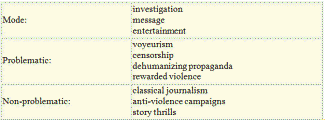
Although often these criteria may not be easy to determine, there are clear examples for each of the different forms: Reality TV or paparazzi activities may have to do with the truth but they also, in the extreme, influence this very truth through their own behaviour -- see the discussion surrounding Princess Diana's death. Through the informal communication patterns on the Internet also rumours have become part of "serious" news-reporting, as the discussion around the American president in January 1998 has shown. Whether true or not, deviant groups and cults can influence the global information streams more efficiently than ever before. The cases of Serbia and Rwanda on the other hand has demonstrated the role which "traditional" mass propaganda through the radio still can play in genocide. Many incidents around the world finally indicate that children often lack the capacity to distinguish between reality and fiction and take for granted what they see in entertainment films stimulating their own aggression. If they are permanently exposed to messages which promote that violence is fun or is adequate to solve problems and gain status, then the risk that they learn respective attitudes and behaviour patterns is very high.
Theories and research studies
General theoretical background
Many scientific theories and studies have dealt with the problem of media violence since the beginning of the 20th century. Most of them originate in North-America, Australia/New Zealand or Western-Europe. But increasingly, Asia, Latin-America and Africa are contributing to the scientific debate. The most influential studies are briefly presented. They cover a broad range of different paradigms: cultural studies, content analyses of media programs, behavioural research. However, the terms aggression and violence are exclusively defined here in terms of behaviour which leads to harm of another person. For phenomena, where activity and creativity have positive consequences for those involved, other terms are used. Recently, scientists have overcome their traditional dissent and have come to some common conclusions. They assume a media effects risk which depends on the message content, the characteristics of the media user, and his family, as well as his social and cultural environment. All in all, children are more at risk to be immediately influenced than adults. But certain effects, like habituation, also hold for older age groups. While short-term effects may be described in terms of simple causal relationships, the long-term impact is more adequately described as an interactive process which involves many different factors and conditions. Yet, as the commercial and the political world strongly rely on the influence of images and messages (as seen in the billion dollar turnover of the advertising industry or the important role of media in politics), it seems naive to exclude media violence from any effects probability.
The most influential theory on this matter is probably the social learning approach by Albert Bandura and his colleagues. As much of what people learn happens through observation in their immediate environment it can be concluded that similar processes work through the media. Many studies have demonstrated that children especially either directly imitate what they see on the screen or they integrate the observed behaviour patterns into their own repertoire. An extension of this theory considers the role of cognitions. If I see that a certain behaviour, e.g., an aggressive one, is successful, I believe that the same is true for my own life. Groebel & Gleich (1993) and Donnerstein (National Television Violence Study, 1997) both show in European and US-American studies that nearly 75% of the aggressive acts depicted on the screen remain without any negative consequences for the "aggressor" in the movie or are even rewarded.
The so-called script theory, among others, propagated by Rowell Huesmann and Leonard Eron, assumes the development of complex world views ("scripts") through media influence. If I over-estimate the probability of violence in real life (e.g., through its frequency on the TV-screen), I develop a belief-system where violence is a normal and adequate part of modern society.
The role of the personal state of the viewer is stressed in the frustration-aggression- hypothesis (see Leonard Berkowitz). Viewers who have been frustrated in their actual environment, e.g., through having been punished, insulted, or physically deprived, "read" the media violence as a signal to channel their frustration into aggression. This theory would explain why in particular children in social problem areas are open to media-aggression effects.
The contrary tendency has been assumed in the catharsis-theory, and later the inhibition-theory by Seymour Feshbach. As in the Greek tragedy, aggressive moods would be reduced through the observation of similar states with others (substitute coping). Inhibition would occur when the stimulation of own aggressive tendencies would lead to (learned) fear of punishment and thus contribute to its reduction. While both approaches may still be valid under certain circumstances, they have not been confirmed in the majority of studies, and their original author, Feshbach, now also assumes a negative effects risk.
A lot of the fascination of media violence has to do with physiological arousal. The action scenes, which are usually part of media violence, grab the viewer's attention and create an at least slight "kick", more probably among males. At the same time, people tend to react more aggressively in a state of arousal. This would again explain why arousing TV scenes would lead to higher aggression among frustrated/angered viewers, as Dolf Zillmann explains in his excitation-transfer theory. In this context it is not the content but the formal features, sound and visual effects that would be responsible for the result.
Among others, Edward Donnerstein, Neil Malamuth, and Donald Linz have investigated the effect of long-term exposition to extremely violent images. Men in particular get used to frequent bloody scenes; their empathy towards aggression victims is reduced.
The impact of media violence on anxiety has also been analyzed. George Gerbner and Jo Groebel both have demonstrated in longitudinal studies that the frequent depiction of the world as threatening and dangerous leads to more fearsome and cautious attitudes towards the actual environment. As soon as people are already afraid or lack contrary experiences they develop an anxious world view and have difficulties in distinguishing between reality-and-fiction.
Cultural studies have discussed the role of the cultural construction of meaning. The decoding and interpretation of an image depends on traditions and conventions. This could explain why an aggressive picture may be "read" differently, e.g., in Singapore than in Switzerland, or even within a national culture by different groups. These cultural differences have definitely to be taken into account. Yet, the question is, whether certain images can also immediately create emotional reactions on a fundamental (not culture-bound) level and to what extent the International mass media have developed a more homogeneous (culture-overspanning) visual language.
Increasingly, theories from a non-Anglosaxon background have offered important contributions to the discussion. In Paris, a UNESCO-sponsored congress was held in 1997 chaired by E. Auclaire where many of these approaches, including Psychoanalysis and Psychiatry, were presented. This event continued a series of meetings which had been started in Lund in 1995, where the global platform on media violence had led to the creation of the UNESCO International Clearinghouse on Children and Violence on the Screen, with headquarters in Goteborg (and probably Utrecht; see the reports of Nils Gunnar Nilsson).
The compass theory
As basis for the UNESCO study, Jo Groebel has formulated the compass theory. Depending on already existing experiences, social control, and the cultural environment, media content offers an orientation, a frame of reference which determines the direction of one's own behaviour. Viewers do not necessarily adapt simultaneously what they have observed, but they measure their own behaviour in terms of distance to the perceived media models. If extreme cruelty is "common", "just" kicking the other seems to be innocent by comparison if the cultural environment has not established a working alternative frame of reference (e.g., social control; values).
In general, the impact of media violence depends on several conditions: media content -- roughly 10 acts of violence per hour in the average programming (see the recent US National Television Violence Study, 1997); media frequency; culture and actual situation; and the characteristics of the viewer and his family surrounding. Yet, as the media now are a mass phenomenon, the probability of a problematic combination of these conditions is high. This is demonstrated in many studies. Based on scientific evidence, one can conclude: The risk of media violence prevails.
Method and design of the UNESCO study
A study which is to be conducted in different countries and cultures faces several problems: The logistics are difficult; many countries do not have scientific faculties that could run the study there; the cultures are so different that not only language problems but also differences in the social meaning of terms appear. Therefore the authors of this project chose a standardized procedure.
All logistics were centrally organized by the World Organization of the Scout Movement from their Geneva headquarters. The organization used their International network of National Scout Organizations to conduct the study in the respective countries. To that end, two officers of the Scout Movement travelled to the countries in the sample (see below) and instructed their local representatives in how to apply the procedure. In addition, the World Scout Organization took care of the translations into the different National languages and the necessary pretests in each country. The advantage of the Scout Movement, apart from its logistics, is its strict political and ideological independence. Thus, no intended or unintended interference based on a certain belief system was to be expected.
Although language and meaning are always culture-bound we chose a questionnaire-procedure to analyze the relationship between media preferences and aggression. By applying exactly the same questions all over the world a maximum comparison was possible. As we limited the items to descriptive, preference and behavioural data, excluding evaluations and performance measures, we assume a relatively culture-independent measurement. Of course, systematic differences in preferences are indicators of cultural specifics. That was exactly what we wanted to measure. The reliability and the validity of the data are not reduced through that approach. The regional pre-tests demonstrated that all children could comprehend the questionnaire which they had to fill in during classes and that all items were meaningful to them. Of course, without financial and time constraints, an even better pre-testing would have been possible. However, the a posteriori analyses confirmed the quality of the work.
The questionnaire itself consisted of a mixture of text-questions with mostly multiple-choice answers and very simple (again, culture-free) sketches which depicted a number of social situations. The children then had to choose between several options, e.g., an aggressive or a peaceful solution to a depicted conflict. Several factors were investigated: the children's demographics, their social and family situation, media use and preferences, level of aggression in their environment, their own aggressive tendencies, level of anxiety, and their perception of values and orientations. All in all, about 60 different variables were included.
The sample for the study consisted of an original core group of 23 different countries around the world, where, depending on country-size, between 150 and 600 12-year old school children (boys and girls) were to be investigated respectively. The countries were selected to represent different regions and social development structures, cultures, and economic and social circumstances. After finishing the remaining core data, roughly 5,000 International 12-year-olds contributed to the project. The participating countries are: Angola, Argentina, Armenia, Brazil, Canada, Costa Rica, Croatia, Egypt, Fiji, Germany, India, Japan, Mauritius, the Netherlands, Peru, Philippines, Qatar, South Africa, Spain, Tadjikistan, Togo, Trinidad & Tobago, Ukraine.
In addition to the core-group, an even broader "control group" of countries was organized by the scientists from Utrecht University. With this additional group, including Austria, Russia, the USA, and most probably France, Great Britain, Sweden, and Poland, a link with already existing national research shall be established.
A quota-sample was used, which considered three criteria: gender, rural versus metropolitan environment, high versus low level of aggression in the students' actual environment. With the last two, the sample was systematically structured. Gender was assumed to be equally distributed across the schools. In addition, the types of school were nationally chosen to represent the respective school systems.
The age was fixed at 12 years in order to standardize possible developmental effects. Many studies have dealt with age differences, and the age of twelve seems to be a period where the interest in media is particularly high; at the same time children are still in the process of socialization. 12 years is the age where they start to become adolescents and are particularly interested in adult role models and respective media images. Of course, "psychological age" and maturity may differ interculturally but still fundamental developmental stages are valid across cultures, as many studies have shown. In any case, we decided to standardize the age factor.
The gathering of the data started in the fall of 1996 and finished with this report in September 1997. Thus, it is not only one of the largest, but also one of the most actual and "fastest" media-effects projects ever conducted.
The results
About 350,000 individual data were obtained and processed (more than 5,000 students with more than 60 variables each). In the first step, simple analyses were applied, in order to get a general overview of the demographics, the global media use, and the state of violence among children around the world. In addition, first indicators of the correlation between media use and individual aggression were obtained. In this stage, most results are based on frequency-and percentage-tables plus a few cross-tabulations. More sophisticated analyses will be featured in a later stage (for the experts: including structural analyses and multivariate models).
The demographics
Global statistics:
2,788 boys and 2,353 girls participated in this stage of the study; all were 12 years old. Boys (54.1%) are thus slightly over-represented compared to girls (45.6%). However, this was intended as we regarded boys as the bigger risk group.
About 80% of the children live with both parents; 13% only with their mother, 2.5% with their father. The remaining live with relatives, in orphanages, or alone. 49% live in a big city, 28% in a small town, 20% in little villages, and the remaining 3% in camps or single houses. The majority of children have fathers who work as employees; 10% do not know their father's profession (as they may not know him). About 9% of the children already have experienced fleeing a country. Nearly 40% of the mothers around the globe take care of the household as their primary profession. Most children live in small to medium-size families either alone with their parents or with just one or two more brothers or sisters (about 90%). About one third of the children were rated (by the local Scout representatives) to live in an aggressive environment or to face problems. The originally proposed 50% match could not be reached as several countries seem to have hardly any such area, which could be easily identified.
Regional differences:
In this stage of the study, we concentrated on four "regions", not the individual countries: Africa, Asia/Pacific, Europe/Canada, Latin-America. By doing so, we brought together areas which between themselves may differ immensely. We "merged" Europe and Canada as we assume some common cultural basis. This, of course, is also partly true for Europe and Latin-America. However, for Latin-America there were sufficient numbers of countries to form their own cluster. In any case, this clustering was not more than a first testing of rough cultural differences or overlaps. Some results: Africa has the fewest children of our sample which live together with both parents (app. 72%), Asia the most (88%). Latin-America (75%) and Europe/Canada (83%) are in between. Asia has the most children living in big cities (56%), Europe/Canada (43%) the least. Africa has the most refugees (12%), Latin-America the least (4%).
Not all of these numbers may fit with an objective global count, but some regions were not accessible at all; we also could only investigate children who were able to read. Yet, for the purpose of the study the data seem to be sufficiently valid.
A remarkable difference showed with respect to the mother's profession: While in Latin-America 51% and in Asia 55% of the mothers were reported to take care (exclusively) of the household, the numbers for Europe/Canada are 33% and for Africa 9.9%. For different reasons, most mothers in these two regions also work in other positions (take care of everything; are employed).
All in all, the country selection represented the complete UNDP-index range.
Media use
Global statistics:
97% of the school areas in our sample can be reached at least by one TV broadcast channel. For most areas the average is four to nine channels (34%). 5% receive one, 3% two, 9% three channels, 11% ten to twenty, and 18% more than twenty channels. The percentages are minimum values, as 17% did not answer this question.
91% of the children in our global sample have access to a TV set, primarily at home. Thus, the screen has become a universal medium around the world. Whether it is the favelas, a South Pacific island, or a skyscraper in Asia, television is omnipresent, even if we consider that we did not cover some regions where TV is not available at all. This result justifies the assumption that it still is the most powerful source of information and entertainment outside face-to-face communication. This is confirmed by further statistics. Even radio and books do not have the same distribution (91%, 92%).
All other media follow with some distance: newspaper 85%; tape recorder (e.g. cassette) 75%; comics 66%; video recorder 47%; video games (like "gameboy") 40%; PC 23%; Internet 9%.
The children could report how much time they spend with several favourite activities. The children spent an average of 3 hours daily in front of the screen. That is at least 50% more time spent with this medium than with any other activity including home work (2 hours), helping the family (1.6 hours), playing outside (1.5 hours), being with friends (1.4 hours), reading (1.1 hours), listening to the radio (1.1 hours), to tapes/CDs (0.9 hours), or using the computer (0.4 hours, for whom it applies).
Thus, TV dominates the life of the children around the globe.
Regional differences:
Europe/Canada have the highest distribution of TV (nearly 99%), Africa the lowest (83%). Actually in our study the distribution of TV may be over-represented for Africa, as we did not consider non-school groups or areas without any electricity available. Latin-America comes a close second after Europe/Canada (97%), Asia has "92%. The order is roughly the same with most other audio-visual media, like video, PC, games -- see the numbers under global statistics above. Radio plays still an important role in Africa; here the percentage is similar to Europe/Canada and Latin-America (app. 91%), and slightly higher than in Asia (88%).
Orientations and values
Global statistics:
The emotional states, as well as their ideals are important factors which moderate how children cope with their environment and how they evaluate what they observe in the media. Of course, the media themselves can influence these states and norms.
What is the general emotional state of the children? About two thirds report that they are happy most of the time. About one fourth know the feeling, but do not regularly experience it, and about 2.5% say that they are never happy. There is no difference between boys and girls. Nearly half of the children are anxious most of the time or often, with again no difference between boys and girls. About 47% of the children report that they would like to live in another country (either for adventure or for escapism reasons).
Although the majority of the children are relatively happy, a remarkable number live in a problematic emotional state.
What kind of persons are perceived as role models by the children? They could give a name which then was ordered along a list of different characteristics. The results again demonstrate the importance of the media.
Most children (26%) name an action hero, followed by pop stars and musicians (18.5%). However, there are important gender differences. 30% of the boys mention an action hero, as compared to 21% of the girls. But even for the female group this character comes second after pop stars/musicians (girls: 27%, boys: 12%).
Other personalities play a less important role: About 8% name a religious leader, 7% a military leader (boys: 9%, girls: 3.4%), 6% a philosopher/scientist, 5% a journalist, and only 3% a politician. The remaining are personal acquaintances or have other roles.
This confirms the global trend: Action heroes and pop stars are the favourite role models among children.
Nevertheless, religious beliefs are still widely spread: About 90% of the children report that they believe in (a) God.
What are the personal values of the children? 40% report that their favourite wish is to have a family, because they either live in a functioning parent-child relationship or because they lack it but would like to have it. For 10% enough food is the favourite. This may mean that this group regularly experiences food-deprivation. For 25% of the boys the favourite wish is always to be a winner, 19% of the girls say the same.
Regional differences:
The emotional states seem to differ somewhat between the world regions. While happiness is more or less equally distributed (with Latin-America being a little "happier" than Africa, Europe/Canada, and Asia, in that order), remarkable differences occur when it comes to being anxious. Around 50% of the children in Africa, Latin-America, or Asia are (very) often anxious as compared to about 36% in Europe/Canada.
There are regional differences between the favourite heroes: Asia has the highest ranking for action heroes (34%), Africa the lowest (18%), with Latin-America and Europe/Canada in between (25% each). This may have to do with the significantly lower saturation of audio-visual media in Africa, but may also have other cultural reasons.
However, there is a clear correlation between the presence of TV and reporting action heroes as favourites.
The favourites in Africa are pop stars/musicians (24%) with Asia the lowest (12%). Africa has also high rankings for religious leaders (18%), as compared to Europe/ Canada (2%), Latin-America (6%), and Asia (6%). Military leaders score highest in Asia (9.6%), and lowest in Europe/Canada (2.6%). Journalists score well in Europe/Canada (10%), low in Latin-America (2%). Politicians rank lowest in Europe (1%), highest in Africa (7%).
Again, there may be a correlation with the distribution of mass media: the more TV, the higher the rank of media personalities, and the lower the traditional ones (politicians, religious leaders). In Europe/Canada, journalists get ten times as many votes as politicians.
There is a strong correlation between the accessibility of modern media and the predominant values and orientations.
Violence and aggression
Global statistics:
As reported, roughly one third of the children in our sample live in a high-aggression environment or problematic neighbourhood. This ranks from high-crime areas over recent-war zones and (refugee) camps to economically poor environments which of course do not have to be aggressive per se. Yet, in these areas, more than twice as many people seem to die of being killed by others than in the low-problem neighbourhoods (children's reports: 16% versus 7%).
Again, twice as many children there are member of an armed gang (5.2%) as compared to the low-aggression areas (2.6%). They report more personal enemies (9% versus 5.9%) and regard attacking more often as fun than the children from the low-aggression neighbourhoods (8% versus 4.7%). They also have used weapons more often against someone (7.5% versus 5.5%). Thus, it comes as no surprise, that they are also more anxious (most of the time: 25% versus 19%), and would like to live in another country (53% versus 46%). But they also report a similar happiness as the low-aggression group. However, their world view is obviously influenced by their experience: Nearly one third of the aggression-environment group believe that most people in the world are evil (compared to slightly more than a fifth of the low-aggression- area group).
The pattern is clear and plausible: In high problem areas, children do not only experience more aggressive behaviour, they are also emotionally and cognitively affected: more hedonistic violence, more anxiety, a more pessimistic world view.
Regional differences:
Different forms of aggression are evaluated differently in the cultures of the world. We wanted to know whether a physical attack or a verbal insult is perceived as more "damaging". The results confirm the cultural differences: In Europe and Canada, children regard a physical attack with fists as worse (55.5%) than being given insulting names (44%). In Asia, the opposite is the case: for nearly 70%, verbal insults are worse than physical attacks (29%). Africa is similar to Asia (verbal: 63%, physical: 35%). Latin-America is balanced (50% each).
In different situations, where is the highest probability of aggressive reactions to be found? We presented a number of simple sketches which showed a variety of social situations: A verbal conflict, a physical attack, a recorder damaged by another child, a stereo which a child urgently wanted to have, a group of people hanging around. For each of these situations, the children should say how the involved persons would react, and what they themselves would do in a similar situation.
In situations of social conflict, children in Africa reported most frequently that they would regard physical attacks as adequate reaction: e.g., 32% hitting the other as reaction to verbal insult (Asia 15%, Latin-America 14%, Europe/Canada 16%); 9% even reported shooting the other as adequate. Nearly one third in Africa reported, that a group of people hanging around would attack another group as next action (Asia 28%, Europe/Canada 20%, Latin-America 19%).
At the same time, children in Africa experience having a gun as a powerful feeling more often than in the other regions (25%; Latin-America 18%; Europe/Canada 18%; Asia 10%). They also report that they themselves have a gun more often (4.5%; Latin-America 3.5%; Asia 3.3%; Europe/Canada 2.4%). In general, children in Africa and Asia have twice as often used a weapon against someone (7.1 %; 8.3%) as those in Latin-America and Europe/Canada (4.4%; 3.6%).
All in all, the children's aggressive behaviour patterns and perceptions are a mirror of what they experience in their real environment: frustration, aggression, problematic circumstances.
However, to what extent do the media contribute to these patterns? To what extent do they channel the already existing aggressive predispositions?
Media violence
Most studies show that the relation between media violence and "real" violence is interactive: Media can contribute to an aggressive culture; people who are already aggressive use the media as further confirmation of their beliefs and attitudes, which, in turn, are reinforced through media content. This interaction is especially true for long-term developments. At this stage of the study, we can offer some correlations between media and "real" violence. A one-directional effect cannot be assumed on the global level and could also not be empirically tested. The study focuses on the role of the media in the complex culture of violence beside other influences.
A major question is, whether children are able to distinguish between reality and fiction. Another one deals with the perception that media and everyday-experiences are similar. We compared the children from the high- and the low-aggression environments and asked them whether what they saw in the media resembled their own experiences.
In all cases, the high-aggression-area group reported a stronger overlap between reality and fiction than the low-aggression-area group (movies: 46% versus 40%; TV: 72% versus 69%; radio: 52% versus 48%; comics: 26% versus 22%; all in all not an extreme, but homogeneous trend). Thus, they are more probably confronted with similar aggressive messages in their actual environment and in the media with a higher probability than children from a less-violent neighbourhood. Obviously, media content reinforces the already mentioned belief that most people are evil.
Many children are surrounded by an environment where "real" and media experiences both support the view that violence is natural.
The fascination of violence is often related to strong characters who can control their environment, are (in the end) rewarded for their aggression, and can cope with nearly every problem. The message is at least threefold: Aggression is a good means to solve conflicts; aggression offers status; aggression can be fun. The larger-than-life hero of course is an old theme of art and literature. It serves both needs, the compensation of one's own deficits, and the reference point for one's own behaviour. Relatively new, however, is the global uniformity of such heroes through the mass media and their commercial weight.
One such media figure is the Terminator character from two movies of the same name, starring the actor Arnold Schwarzenegger. Our results confirm that Terminator is a cross-cultural hero. About 88% of the world children population (if our sample is representative) know him.
In the comparison between high- and low-aggression areas it is remarkable that 51% of the children of the high-aggression environment would like to be like him as compared to 37% in the low-aggression neighbourhoods. He seems to represent the characteristics which children think are necessary to cope with difficult situations.
Equally successful are heroes like Rambo, and of course "local" heroes from the respective domestic media markets, e.g., India, Brazil, or Japan.
An aggressive media hero is particularly ''successful'' as role model in the high-aggression areas of the world. Some of these heroes have become culture-overspanning icons.
Are there any systematic patterns in the aggressive cognitions which link personal motives, actual environment, and media content? We analyzed the correlation between different forms of "sensation seeking" (the motive to be thrilled through risk and adventure), a relatively stable personality characteristic, on the one hand, and different actual and media environments on the other.
There was no difference in sensation seeking in the high- and the low-aggression environment. That is plausible, as this personality characteristic is assumed to be highly genetically determined, thus relatively free of environmental influences. However, when we split up the sample into a group with a comparatively well developed technological infrastructure and one with a less well developed one (criterion: distribution of computers, then "median"-split = 50% high/low dichotomy), the picture changed. Twice as many children in the "high technology"-group as in the "low technology"-group reported a risk-seeking tendency (20% versus 10%).
In terms of regions, Africa has by far the lowest (7.3%), Europe/Canada (18.9%) the highest scores, with Asia (18.5%), and Latin-America (15.9%) following close.
This may have to do with two aspects:
a) the sensory stimulation is probably higher in high-technology environments; it thus creates a generally higher state of permanent arousal;
b) with a higher availability of media programming, the risk-seeking tendency is modelled into uniform patterns which mirror the content of the media (e.g., the car chase as a movie icon).
To test the latter, we linked the sensation-seeking tendency in an additional analysis with the preference for media content. The picture is clear. Children, and in particular boys, with a risk seeking tendency have a higher preference for aggressive media content than those who lack this tendency (boys: 40% versus 29%). When asked, whether they would themselves want to be involved in an aggressive situation, the tendency was even stronger: 47% of those who prefer aggressive media content would also like to be involved themselves in a risky situation (as compared to an average of 19% with other media preferences, range: 15%-23%). In the recent analysis, this result comes closest to a direct effects measure:
There is a link between the preference for media violence and the need to be involved in aggression oneself.
The overall result can be interpreted as follows:
The tendency of sensation-seeking is possibly genetically determined (with an extremely strong gender influence: 25% of the boys, but only 4% of the girls report risk-seeking!). The level and direction of this tendency, however, is moderated through the environment. When violence is presented as "thrilling" in the daily media environment, this reinforces the "reward characteristics" of the respective behaviour. When children actually experience violence in their immediate environment, the hedonistic value of "heroism" makes place for its "survival"-value (see the action hero-results).
Thus, depending on the "real" environment, media violence can serve different functions. Nevertheless, in both cases it confirms the "reward"-characteristics of aggressive behaviour.
Conclusions and recommendations
At this stage, we can summarize the role of the media in the perception and application of aggression as follows:
Media violence is universal. It is primarily presented in a rewarding context. Depending on the personality characteristics of the children, and depending on their everyday-life experiences, media violence satisfies different needs: It "compensates" own frustrations and deficits in problem-areas. It offers "thrills" for children in a less problematic environment. For boys, it creates a frame of reference for "attractive role-models". There are many cultural differences, and yet, the basic patterns of the media violence implications are similar around the world. Individual movies are not the problem. However, the extent and omnipresence of media violence contributes to the development of a global aggressive culture. The "reward-characteristics" of aggression are more systematically promoted than non-aggressive ways of coping with one's life. Therefore, the risk of media violence prevails.
The results demonstrate the omnipresence of TV in all areas of the world. Most children around the globe seem to spend most of their time with the medium. What they get is a high portion of violent content. Combined with the real violence, which many children experience, the probability is high that aggressive orientations are promoted rather than peaceful ones. But also in lower-aggression areas, violent media content is presented in a rewarding context. Although children cope differently with this content in different cultures, the transcultural communality of the problem is the fact that aggression is interpreted as a good problem-solver for a variety of situations.
Children want a functioning social and family environment. As they often seem to lack these, they seek role models which offer compensation through power and aggression. This explains the universal success of movie characters like Terminator. Individual preferences for films like this one are not the problem. However, when violent content becomes a common phenomenon up to the occurrence of an aggressive media environment, the probability that children develop a new frame of reference, and that problematic predispositions are channelled into destructive attitudes and behaviour increases immensely.
What are possible solutions? Probably more important than the media are the social and economic conditions in which children grow up. However, the media as constituents of cultures, beliefs, and orientations also deserve much attention. Centralized control and censorship are not efficient and do not meet the criteria of democratic societies.
Three major strategies should be considered:
• Public debate and "common ground" talks between politicians, producers, and teachers.
• The development of professional codes-of-conduct and self-discipline for producers.
• Innovative forms of media education to create competent and critical media users.
Apart from media professionals non-governmental organizations in general and nonformal educational agents with a global perspective such as Scouting can play an important role in this respect.
With communication systems like the Internet, the media will be even more omnipresent and universal. As a consequence, the new digital environment demands similar attention as culture and education in the traditional world.
_______________
Notes
1. The study is a joint project of UNESCO, The World Organization of the Scout Movement and Utrecht University. This report was presented by Prof. Dr. Jo Groebel to UNESCO on February, 19, 1998.
References
Groebel, J. (Ed.) (1997). New Media Developments. Trends in Communication I. Amsterdam, Boom Publishers.
Groebel, J. & Gleich, U. (1993). Gewaltprofil des deutschen Fernsehens [Violence Profile of German Television]. Landesanstalt fur Rundfunk Nordthein-Westfalen. Leverkusen, Leske & Budrich.
Groebel, J. & Hinde, R. (Eds.) (1991). Aggression and War. Their Biological and Social Bases. Cambridge, Cambridge University Press.
Groebel, J. & Smit, L. (1997). Gewalt im Internet [Violence on the Internet]. Report for the German Parliament. Bonn, Deutscher Bundestag.
National Television Violence Study (1997). Santa Barbara, University of California.
United Nations Development Program (1997). Human Development Report 1997. New York, Oxford University Press.


